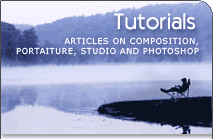Latest Tutorials
F.R.E.E. Photography (part 2 - Reflect)
 (13)
(13) 
This is the second article (Reflect) in the series where I present you a roadmap of a photographer: Feel, Reflect, Execute and Enhance (FREE). As I see it, there are these four stages that the master photographer has to go through in order to achieve a great photograph. In our busy and hasty age (the digital one) people who like photography usually go through one or two of these stages. But I feel that without walking the path from the beginning to the end we will not achieve great results.
F.R.E.E. Photography (part 1 - Feel)
 (20)
(20) 
This is the first article (Feel) in the series where I present you a roadmap of a photographer: Feel, Reflect, Execute and Enhance (FREE). As I see it, there are these four stages that the master photographer has to go through in order to achieve a great photograph. In our busy and hasty age (the digital one) people who like photography usually go through one or two of these stages. But I feel that without walking the path from the beginning to the end we will not achieve great results.
Cartoon Effect
 (54)
(54) 
After reading one of the issues of magazine "Advanced Photoshop" with a tutorial on some cool effects, I started wondering how to create a cartoon painted image out of a photograph. There are several techniques to achieve similar results (i.e. Cut Out filter, techniques that use Pen tool and etc.), but all of them either were not good enough for what I had in mind or too time consuming, like the Pen tool technique. So, after a few rounds with Photoshop I found a way to do it simpler and good enough.
Controling Tone and Contrast in BW Conversion
 (35)
(35) 
This article is a revised version of the one called "Complex Black and White Conversion". It explains how to select and manipulate tone and contrast compositions in conversion of a color image into a black and white image, and how to add some effects and finally present it. The process may appear to be complex and cumbersome, but it provides a lot of possibilities to control the contrast and tones using a mix of channels and variations of blending modes. This article is somewhat based (expands) the one about Calculations.
HDR with Smart Objects
 (51)
(51) 
The article could be easily called "Shoot once, Use it twice", because this article explains how to use a single RAW file to get most data out of it. Usually the dynamic range of the camera (or JPG file) doesn't allow capturing all the details in highlights or in shadows. But the RAW files have this information and a few steps would allow us to retrieve and use this information. That's why we are going to create High Dynamic Range (HDR) file using Smart Objects.
Spirit of Wedding Photographer
 (44)
(44) 
With time you learn new things, find out how better handle different situations and generally how make your life better and easier. There is no difference with my wedding photography thing. But if my previous article "My Wedding Photography - Lessons Learned" I tried to address immediate technical issues, such as flash, lenses, battery, focusing and metering, etc. This article is more about what drives and makes the wedding photographer. Of course, I cannot make any standards in the industry or suggest any guidelines for those who start in this field.
Long Exposure
 (58)
(58) 
Usually the photographs we take have very short shutter speeds - fractions of a second. And there are a lot of articles about such photographs. However when you step into the realm of long exposures, you find many interesting things and effects. In this article I will try to explain several known to me techniques that relate to usage of long exposures.
Color in Black & White
 (82)
(82) 
Some people asked me about my approach of getting color elements in black and white images. So in this article I am going to describe several approaches to do this and show the benefits and drawbacks of those.
Ultimate Makeup
 (102)
(102) 
When you create sellable portraits your goal is to create a flattering image of the client. Many things in such portrait depend on the lighting, pose and other factors, such as props or the environment. Though with some lighting techniques you can reduce or even disguise various imperfections (e.g. blemishes, disproportions and etc.), you can push the limit even further. In this article I want to describe what could be done in Photoshop in order to make the person younger and even add some tan and glow to the skin.
Soft Focus
 (21)
(21) 
Soft focus is an artistic effect, which many photographers like to offer to their clients, and some clients love it as well. But there are a few issues that you should be aware of. Read this article written by Ed Shapiro to find out more.
